MIT Emergency Number: (617) 253-1212
Local EHS Representative: Lisa Nip
Facilities Representative: Kevin Davis
EHS Biosafety officer: Lorena Altamirano
The EHS representative for 015 is Lisa Nip (lisanip @ mit). Please feel free to contact her with any queries or concerns you may have.


This is the preferred equipment to use if you need to rinse your eyes. You should rinse for the full 15 minutes if you get material in your eyes. While this is going to seem like an eternity, it's the only way to ensure that damage to your eyes is minimal!
If you ever need to use this station, it probably means you cannot see or at least not well. It's a good idea to practice getting to the eyewash station with your eyes closed to make sure you can do it if you ever need it. Don't worry, no one will judge you when you practice :)

The emergency shower is located above your head when you are at the sink. Pull the handle to operate it. To stop it, push the handle back up. Operating it will quickly flood the lab. If you can, try to step into a basin to limit the flooding but do not jeopardize your safety for it.
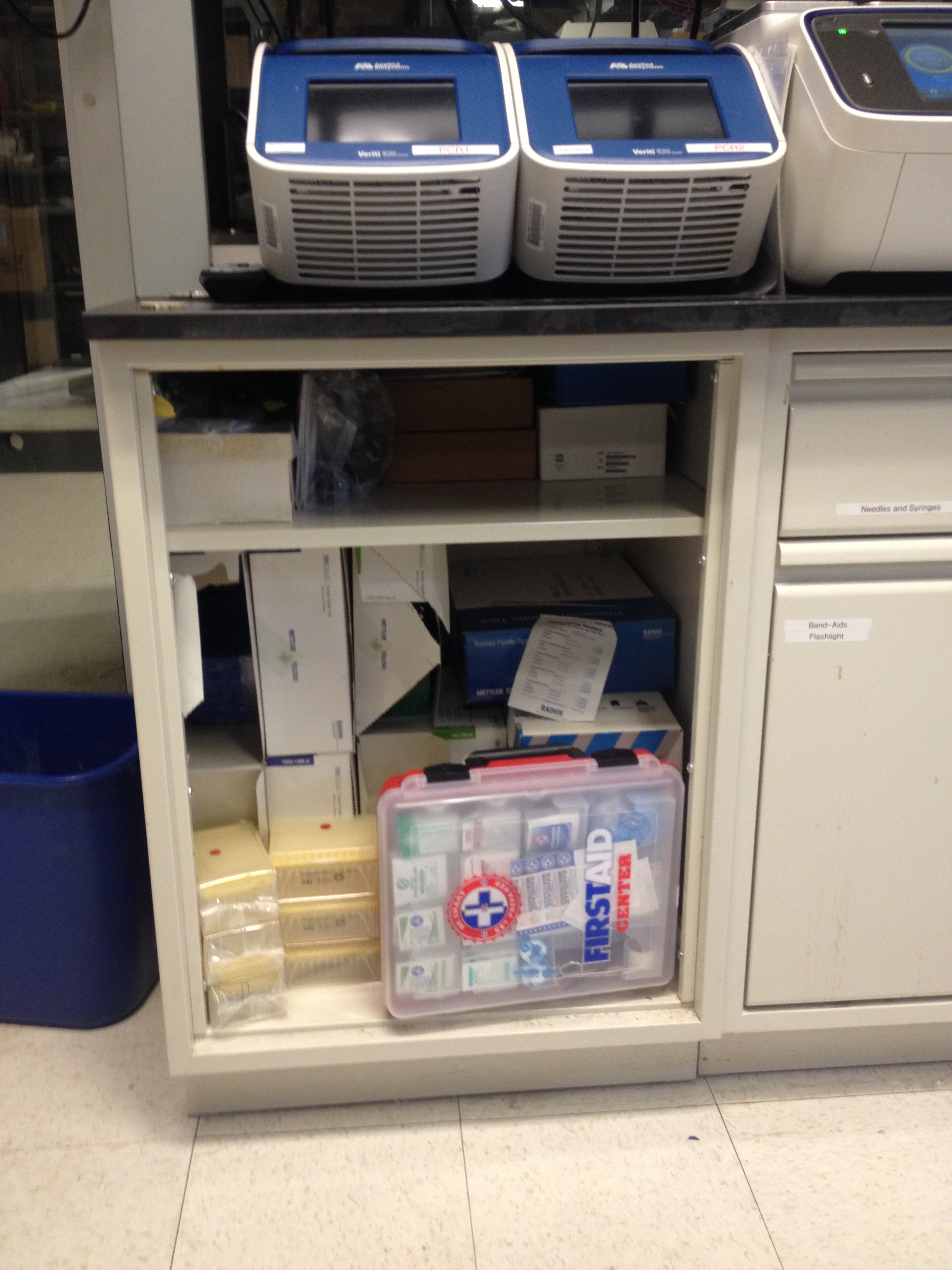
There is one first aid kit in the 015 lab. It is located in a cabinet near the door of E15-016.
Inform the EHS rep if you use any items in the kits so they can be replaced :)
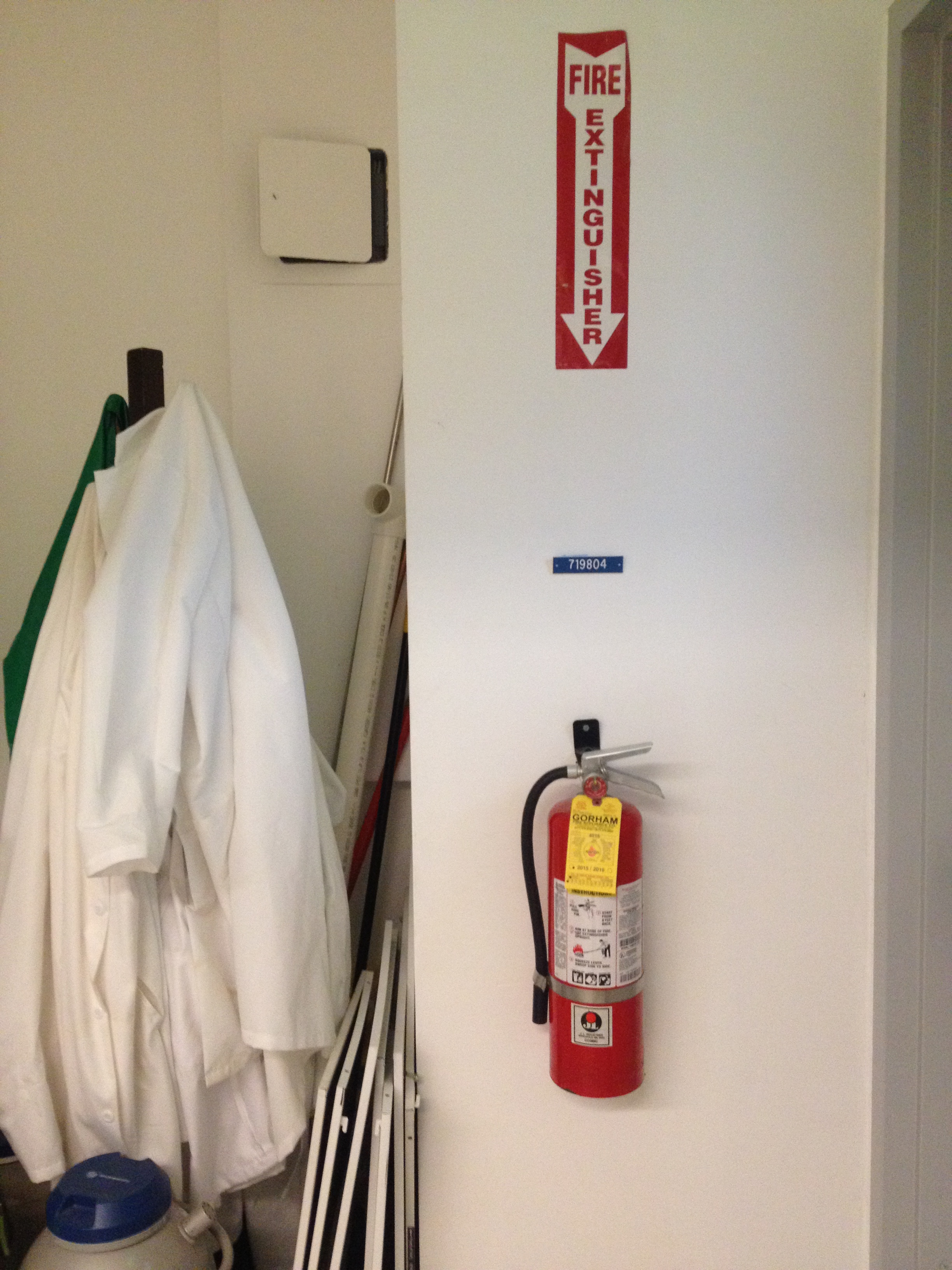
The extinguisher in the 015 located near the main entrance to the lab and is marked by sign on the wall.
Do not fight fires! MIT's policy is not to fight fires but alert emergency services and evacuate to a safe area. The extinguishers are there to help you make your way out of help someone make their way out.

The phone is located near the entrance of E15-016.
Pick up the phone and dial 100.
If the lab phone is nonfunctional, call Emergency Services from your cell at (617) 253-1212)

Gloves are used to protect you as well as your experiments. Some of the work done in the lab is sensitive to DNAse and RNAse contamination (tons on your hands). When you remove your gloves, you should use a "inside-out" technique to minimize the potential to contaminate your hands.
Some chemicals can penetrate through gloves at different speeds depending on the glove material itself. Some gloves will only allow you to work with certain chemicals for a few minutes before you need to change them. Check that your gloves are made of materials suited for the job.
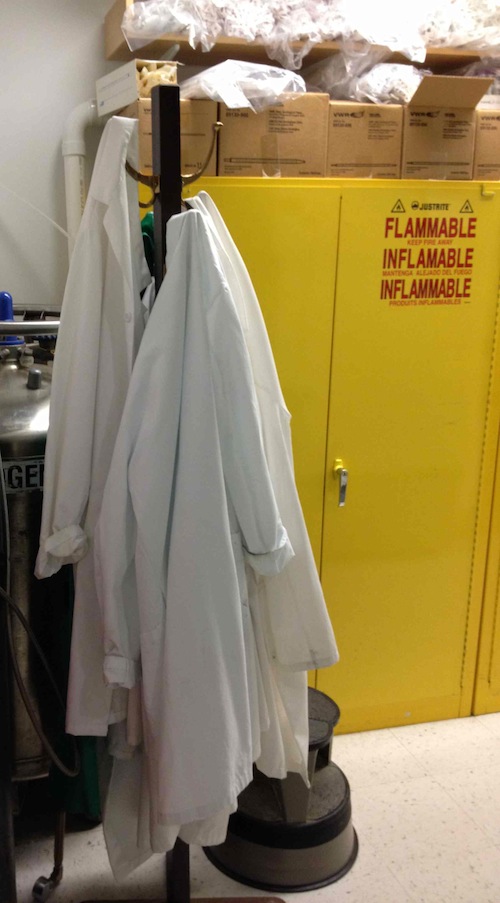
There are many styles of labcoats. For biological work, lab coats with elastic wrist cuffs should be preferred. Wearing a lab coat is required when doing BL2 work and is recommended at BL1. When putting gloves on, you should glove over the lab coat's cuffs as to prevent unvoluntary skin exposure when moving your arms around. It also makes glove removal easier.
Please wear a labcoat when you are working with materials that can splash or large volumes. While it can be tedious, it's the only way to prevent impregnating your clothes which could in turn increase your exposure to the chemical drammatically.
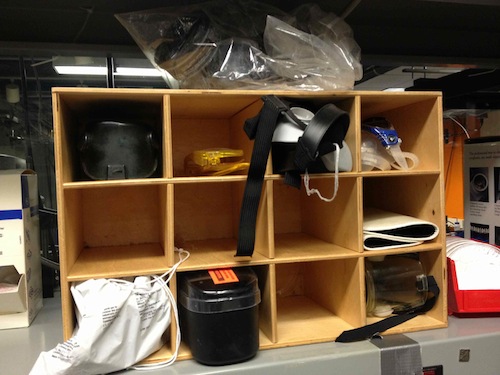
These are provided in a box on the wall near the first aid kit and extinguisher on the left when entering the lab from the lobby. Use googles when working with materials that may cause splashing. If you need goggles to block specific wavelength, would like to get prescription vision googles we can have those ordered.
In an emergency, dial MIT services. They are closer and have better knowledge of the buildings. Remember to specify which building and room you are in (E15-015). The address of E15 is 20 Ames St, Cambridge MA 02142
| Position | Name | Contact |
|---|---|---|
| MIT Emergency Services | (617) 253-1212 | |
| MIT Medical Urgent Care | (617) 253-1311 | |
| 015 Representative | Lisa Nip | (415) 335-6217 |
| 016 Representative | Andreas Mershin | (617) 515-4192 |
| 023 Representative | Will Langford | (203) 832-4419 |
| EHS Representative | John DiFrancesco | (617) 253-8136 |

This flipchart summarizes things to do in an emergency. It also lists the emergency phone numbers if you need them.
Alarms
If your fume hood monitor alarm sounds or you feel
that the exhaust ventilation is not functioning
correctly, you need to take immediate action. Shut off
any experiments or processes in the hood, post a “do
not use” sign. Both the EHS Office and Facilities
department will respond as quickly as possible to any
problems involving laboratory ventilation. If
submitting a work order online, be sure to cc:
environment@mit.edu and mark the work order “URGENT.”
An alternative method to report an urgent problem to
Facilities is by calling FIXIT (3-4948) which is
monitored 24/7. If you have questions about whether
your monitor is operating correctly or more general
questions regarding the safe operation of your fume
hood, please contact the EHS Office at (617) 452-3477
(2-EHSS).
Fume Hoods 015:
To silence fume hood alarms press the silence button or the mute button
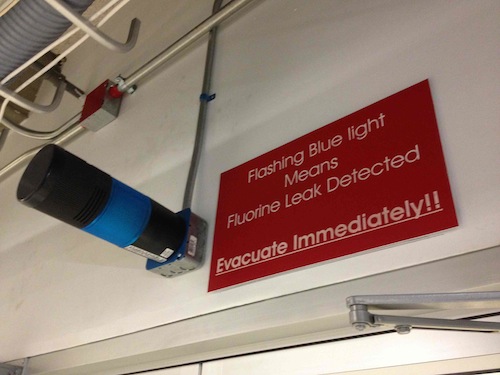
While the fluorine tank is used in the Excimer machine in 023, there are blue colored alarms in 015 and 016 as well. The alarm sounds as well as lights up. If the alarm sounds, but the blue light doesn't come on, it may indicate a loss of pressure or other problem with the cabinet. In that case, go to 023 and look at the gas cabinet control panel and note the message (you can take a picture) and notify John Difrancesco, Will Langford and/or Andreas Mershin.
Fluorine gas is extremely toxic and can cause serious damage. If the alarm sounds, evacuate the premises at once. This will trigger the fire alarm and notify emergency services automatically.

Contact Prashant Patil if there are any issues coming from the electron microscope rooms.

It may happen that you hear an alarm in 015 but is in fact originating from 016. This continous beeping is likely to be due to the CT Scanner running out of coolant. Behind the machine is a pump with a hole for refilling and there usually is a gallon of Hexid 4 next to it. Contact John DiFrancesco if you have any questions.
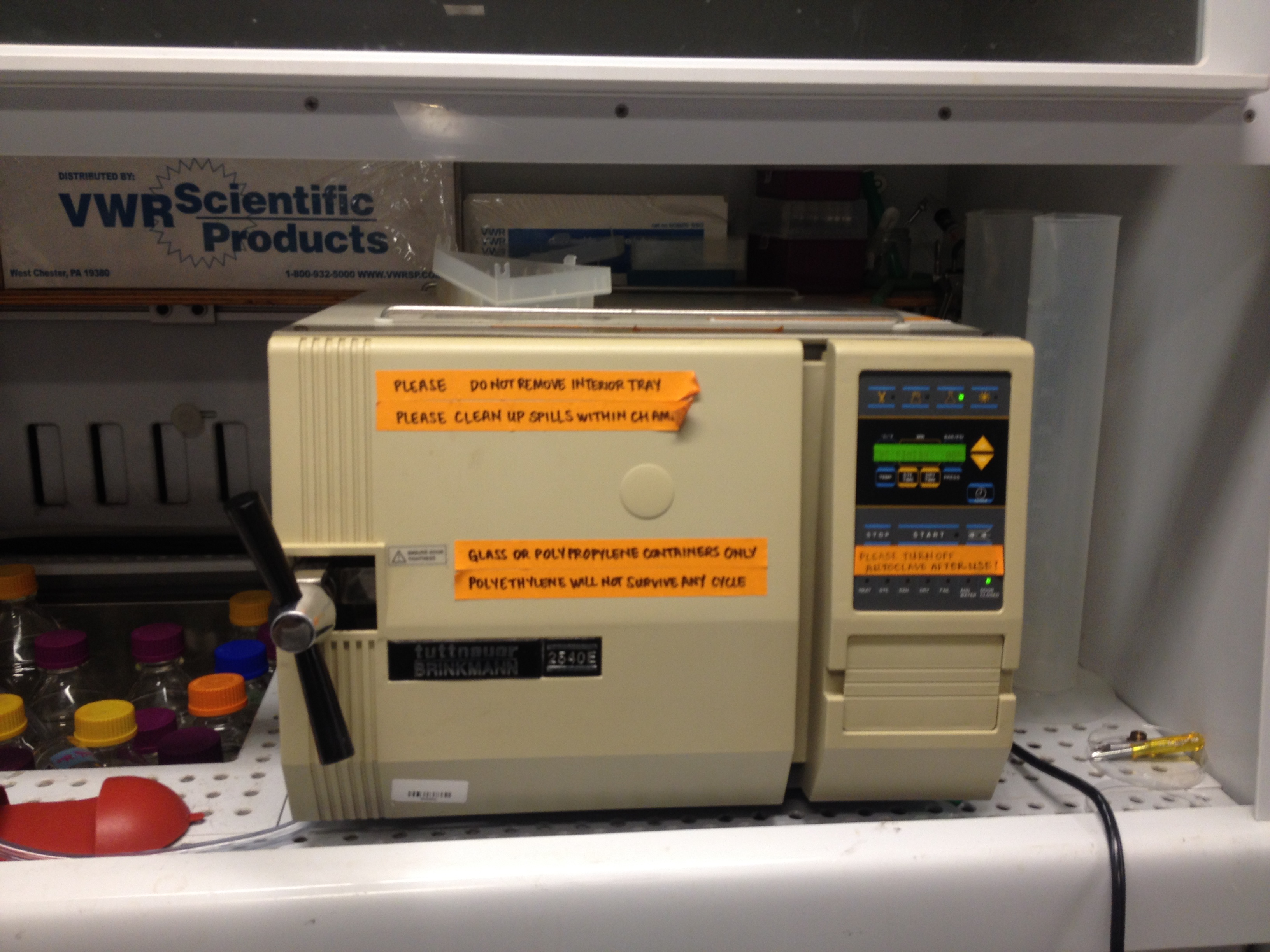
The autoclave emits several beeps during its running cycles: when you turn it on, when it reaches 121˚C, when it finishes the sterilization heating, and when the cycle is completely finished. Occasionally, it will beep when it is low on water, or if an error occurs. Only the latter two warrant concern and you can see which of these occurs by reading the text on the LED scren. If the autoclave's beep is associated with an error, locate the autoclave user, who should either add more water into the basin or contact Lisa ASAP. Please only use the autoclave after having been trained by Lisa.

When the water bath exceeds or does not meet the set temperature, or when the basin is low on water, it may start beeping. If the bath has water, but has no tubes, you may flip the black switch to off, then notify either Lisa or Noah.
| Description | Location |
|---|---|
| Biological Waste Pick Up Form | http://ehs.mit.edu/site/content/biological-waste-pick |
| Chemical Waste Pick Up Form | http://ehs.mit.edu/site/content/chemical-waste-collection-form |
| Detailed Info on Biological Waste | http://ehs.mit.edu/site/content/biologically-contaminated-waste-0 |
| EHS Waste Information Portal | http://ehs.mit.edu/site/waste |